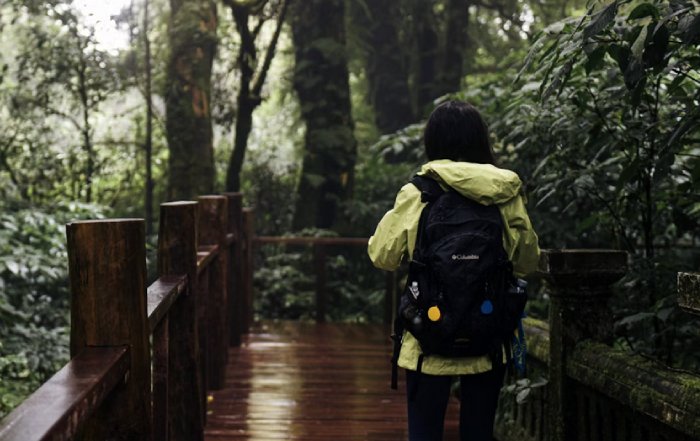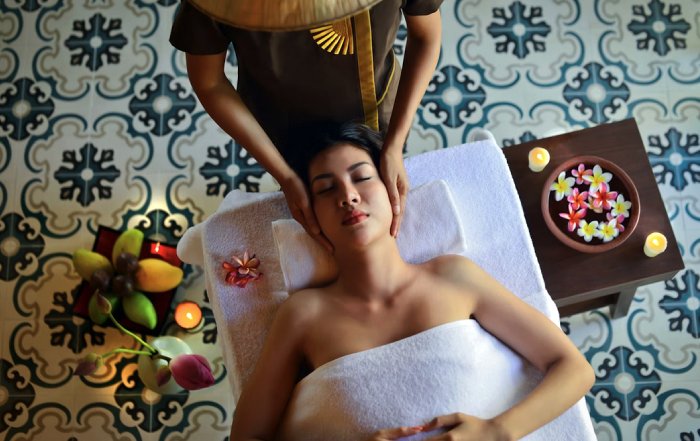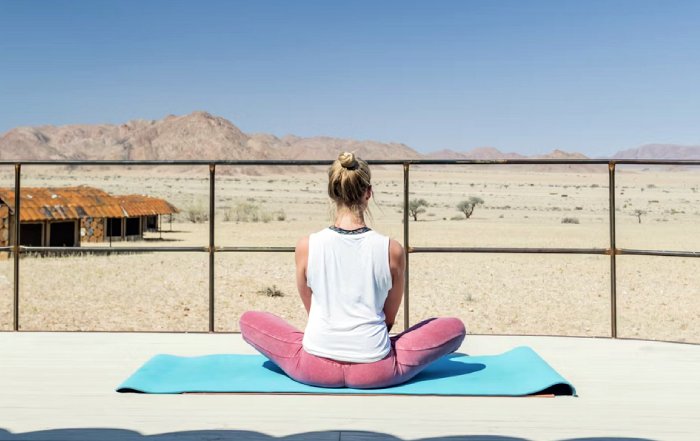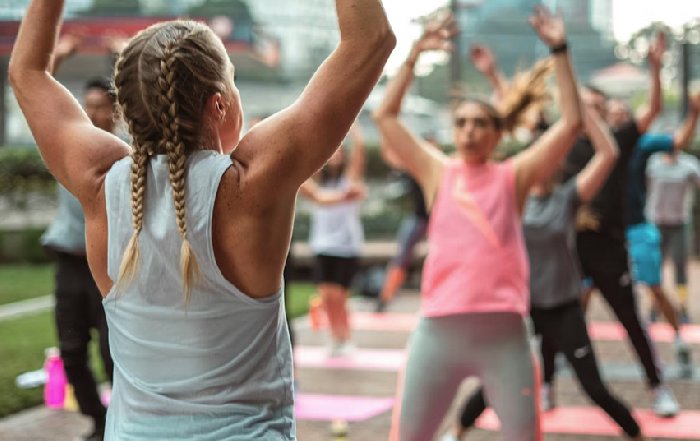Wellness Influencers Redefining Trust in Health Information in 2025
The New Gatekeepers of Health Knowledge
In 2025, wellness influencers have become some of the most powerful gatekeepers of health information worldwide, shaping how individuals in the United States, the United Kingdom, Germany, Canada, Australia, across Europe, throughout Asia, Africa, and South America, and in rapidly growing markets such as Brazil, South Africa, Singapore, and Thailand understand and act on advice about their bodies, minds, and lifestyles. What began as a social media trend driven by charismatic personalities sharing fitness routines, beauty rituals, and mindfulness practices has evolved into a complex ecosystem in which influence, expertise, commercial interests, and public health concerns intersect, and for platforms like WellNewTime this transformation presents both an opportunity and a responsibility to curate guidance that is credible, balanced, and grounded in evidence. As traditional trust in institutions such as governments, large corporations, and even legacy media has fluctuated, many people now turn first to Instagram, YouTube, TikTok, podcasts, and specialized wellness platforms when making decisions about nutrition, exercise, mental health, beauty, and preventive care, and this shift has placed wellness influencers at the center of a new trust architecture that demands careful scrutiny and thoughtful collaboration.
From Inspiration to Information: How Influence Became Authority
The rise of wellness influencers is closely linked to broader changes in media consumption and digital behavior, as audiences increasingly prefer personalized, conversational, and visually engaging content over static expert advice. Over the past decade, research from organizations such as the Pew Research Center has highlighted how social media has become a primary source of news and information for a growing share of the global population, and in parallel, platforms like YouTube and TikTok have made it easy for individuals without traditional credentials to reach millions of viewers with health and wellness content that feels more relatable than institutional messaging. Many early wellness creators focused on personal transformation stories, sharing before-and-after fitness journeys, plant-based diet experiments, or mindfulness practices that helped them manage stress and burnout, and as their audiences expanded, these creators were increasingly treated as authorities, even when their formal qualifications were limited.
This blurring of the line between inspiration and information has profound implications for how trust is built and maintained in the wellness space, particularly as consumers seek guidance on topics that intersect with clinical medicine, such as chronic disease prevention, mental health management, hormone health, and longevity strategies. Platforms like WellNewTime, which cover wellness, health, fitness, and lifestyle, now operate in an environment where audience expectations are shaped by influencer-driven content that is immediate, visually polished, and deeply personal, and this environment compels publishers to balance storytelling and relatability with rigorous editorial standards and transparent sourcing.
The Globalization of Wellness Voices
One of the defining characteristics of the wellness influencer landscape in 2025 is its increasingly global nature, as voices from North America, Europe, Asia, Africa, and South America intersect and cross-pollinate, often in real time. Influencers in the United States and the United Kingdom may popularize high-intensity interval training or intermittent fasting, while creators in Japan, South Korea, and Singapore introduce global audiences to concepts rooted in local traditions, such as forest bathing, fermented foods, and skin-first beauty philosophies. At the same time, practitioners in Germany, the Netherlands, and the Nordic countries share evidence-based approaches to work-life balance, mental health, and preventive care that resonate with professionals in Canada, Australia, and New Zealand who are seeking sustainable ways to manage stress and maintain performance.
International organizations such as the World Health Organization increasingly recognize the influence of digital creators in shaping public perceptions of vaccines, nutrition, and mental health, and initiatives that encourage collaboration between health agencies and trusted influencers are gaining traction. Learn more about global health communication through resources from the World Health Organization. For WellNewTime, whose readership spans continents and cultures, this global cross-pollination of wellness narratives underscores the importance of contextualizing advice within local regulatory environments, cultural norms, and healthcare infrastructures, while still celebrating the shared human desire for vitality, resilience, and balance.
Trust in Flux: Why Wellness Influencers Matter Now
The evolution of wellness influencers into de facto health advisors is deeply connected to the erosion and reconfiguration of institutional trust. Surveys from organizations such as the Edelman Trust Institute and think tanks like Chatham House have documented how trust in government, media, and large corporations has become more fragile and polarized in many countries, particularly in the aftermath of global crises, economic uncertainty, and public health controversies. In this environment, individuals often place greater faith in people they perceive as authentic, accessible, and aligned with their values, even if those individuals lack formal medical or scientific training.
Wellness influencers occupy this trust gap by offering a blend of personal narrative, perceived transparency, and community interaction that traditional institutions struggle to replicate. Many share their own struggles with anxiety, burnout, chronic pain, or body image, and they invite followers into an ongoing conversation rather than a one-way lecture. This relational trust is reinforced by direct engagement through comments, live streams, and private communities, creating an intimacy that makes followers more receptive to recommendations about supplements, therapies, fitness programs, or beauty products. Yet this same trust can be fragile and easily exploited, particularly when commercial partnerships, undisclosed sponsorships, or unverified claims enter the picture.
For a platform like WellNewTime, which covers news, business, and brands alongside wellness content, this dynamic raises important questions about how to feature influencers in a way that respects their authentic connection with audiences while clearly delineating between editorial coverage, sponsored content, and expert-reviewed guidance. In 2025, the most responsible wellness publishers are those that treat influencer narratives as valuable qualitative insights while subjecting health-related claims to the same scrutiny that would be applied to academic research or clinical guidelines.
Experience and Lived Expertise: The Value and Its Limits
A central reason wellness influencers resonate so strongly is their emphasis on lived experience, which offers a powerful counterpoint to the often impersonal tone of traditional medical communication. Individuals living with chronic conditions, neurodivergence, long-term stress, or the after-effects of trauma may feel unseen by conventional systems, and they find validation in creators who speak candidly about their journeys and share practical strategies for navigating daily life. This form of experiential knowledge is particularly visible in areas such as mindfulness, massage therapy, holistic beauty, and integrative health, where subjective experience is an important component of outcomes and satisfaction.
However, the elevation of experience as a form of expertise introduces risks when personal anecdotes are presented as universal solutions or when complex conditions are oversimplified into easily marketable protocols. Organizations such as the National Institutes of Health in the United States and public health agencies in countries like the United Kingdom, Germany, and Canada continually emphasize that individual responses to treatments, diets, or therapies can vary widely based on genetics, comorbidities, and environmental factors. Readers seeking to understand the scientific context behind wellness claims can explore resources from the National Institutes of Health or the National Health Service.
Wellness-focused platforms that aim to be trusted guides must therefore integrate experiential narratives with expert commentary, making clear where stories are illustrative rather than prescriptive. On WellNewTime, for example, an article about massage might highlight the personal journey of an influencer who used bodywork to manage stress and improve sleep, while also directing readers to evidence-based information on massage and mindfulness, and clarifying when professional assessment is necessary. This approach respects the validity of lived experience while anchoring recommendations in broader, more generalizable knowledge.
Expertise in the Age of Social Media: Credentials, Collaboration, and Cross-Checking
In 2025, one of the most significant shifts in the wellness influencer ecosystem is the growing emphasis on demonstrable expertise and credible collaboration. Audiences who once followed personalities purely for aesthetics or charisma are increasingly asking pointed questions about qualifications, evidence, and potential conflicts of interest, particularly in areas that overlap with medical advice, mental health treatment, or complex nutrition protocols. Reputable influencers now highlight their certifications, degrees, or professional affiliations, and many partner with registered dietitians, psychologists, physiotherapists, dermatologists, or physicians to co-create content that meets higher standards of accuracy.
Professional bodies and regulators have also responded to the influence of social media by publishing clearer guidelines on digital health communication and advertising. For instance, regulatory agencies in the United States, the European Union, and countries such as Australia and Singapore have issued directives on how health claims must be substantiated and how sponsored content must be disclosed. Learn more about advertising standards and consumer protection from resources such as the Federal Trade Commission and the European Commission.
For WellNewTime, which aims to embody experience, expertise, authoritativeness, and trustworthiness, this environment underscores the importance of vetting featured experts, verifying claims against reputable sources, and clearly distinguishing between evidence-based recommendations and emerging, experimental practices. By collaborating with credentialed professionals and linking to authoritative external resources such as the Mayo Clinic, the Cleveland Clinic, or the World Economic Forum when discussing the intersection of wellness and business, the platform can help readers cross-check influencer narratives and make more informed decisions.
Commercialization, Brands, and the Business of Influence
The commercial dimension of wellness influence has expanded dramatically, as global brands and emerging startups alike recognize the persuasive power of trusted digital personalities in driving product discovery and adoption across categories such as supplements, fitness equipment, skincare, athleisure, mental health apps, and travel experiences. In markets from the United States and Canada to France, Italy, Spain, and the Nordic countries, brands are increasingly designing campaigns around influencer-led storytelling rather than traditional advertising, integrating product promotion into daily routines, behind-the-scenes glimpses, and aspirational lifestyle content.
This convergence of wellness and commerce has created a multi-billion-dollar industry in which authenticity is both the currency and the product, and where the line between genuine recommendation and paid endorsement can sometimes become blurred. Regulatory bodies and consumer advocacy organizations stress the need for clear disclosure of sponsored content and for evidence to support health-related claims made in marketing materials, particularly when products promise weight loss, detoxification, anti-aging benefits, or mental health improvements. Readers can explore broader discussions on ethical marketing and sustainable business practices through resources from the Harvard Business Review or the OECD.
For a platform like WellNewTime, which covers brands, business, and innovation alongside wellness topics, the challenge is to spotlight innovative companies and partnerships while maintaining editorial independence and clearly labeling commercial relationships. This includes evaluating whether influencer-backed products align with evidence-based standards, whether sustainability and ethical sourcing claims are substantiated, and whether pricing and positioning are transparent and fair. In doing so, the platform can help readers navigate a crowded marketplace with greater confidence.
The Science of Persuasion: Why Wellness Content Feels So Convincing
Understanding how wellness influencers redefine trust also requires examining the psychological mechanisms that make their content so persuasive. Research in behavioral science, social psychology, and digital communication has shown that people are more likely to accept information from sources they perceive as similar to themselves, particularly when those sources share vulnerabilities, struggles, and incremental progress rather than presenting an image of unattainable perfection. This relatability is amplified by the interactive nature of social media, where followers can ask questions, receive personalized feedback, and feel part of a community pursuing shared goals.
Influencers also leverage visual storytelling, habit formation cues, and social proof to encourage behavior change, whether that involves adopting a new fitness routine, trying a mindfulness practice, or investing in a wellness retreat. Learn more about the science of habit formation and behavior change through resources from Stanford University and similar academic institutions, such as Stanford Medicine. For global audiences in regions as diverse as South Korea, Japan, Brazil, and South Africa, these persuasive techniques can help overcome inertia and inspire positive shifts in lifestyle, but they can also create unrealistic expectations or lead to overconsumption of products and services that offer limited real benefit.
Platforms like WellNewTime, which cover environment, travel, and world issues as part of a holistic view of wellbeing, are well positioned to contextualize these persuasive dynamics, helping readers recognize both the motivational power and the potential downsides of influencer-driven wellness narratives. By highlighting the importance of gradual, sustainable changes supported by evidence and by encouraging critical evaluation of claims, the platform can foster a more informed and resilient audience.
Wellness, Work, and the Future of Jobs in the Influence Economy
The expansion of wellness influence has not only reshaped consumer behavior but also transformed the nature of work and careers, particularly for younger generations in North America, Europe, and Asia-Pacific regions such as Australia, New Zealand, and Singapore. Many individuals now pursue hybrid professional paths that combine traditional qualifications in fitness training, nutrition, psychotherapy, massage therapy, or beauty with digital content creation, brand partnerships, and entrepreneurship. This shift reflects a broader trend toward portfolio careers and remote, flexible work arrangements that prioritize autonomy and alignment with personal values.
However, the influence economy also introduces new forms of precarity, as income can be volatile, platform algorithms unpredictable, and reputational risks significant. Aspiring wellness influencers must navigate complex considerations around data privacy, mental health impacts of constant visibility, legal obligations in multiple jurisdictions, and the pressure to maintain a consistent public persona. Organizations such as the International Labour Organization and global think tanks are increasingly examining how digital work, including content creation, fits into broader labor protections and social safety nets. Learn more about evolving work patterns and digital labor through resources from the International Labour Organization.
For readers of WellNewTime exploring jobs and career opportunities in the wellness sector, it is essential to understand both the potential and the pitfalls of building a livelihood around influence. The most sustainable paths tend to combine formal training, diversified income streams, ethical partnerships, and a clear commitment to evidence-based practice, rather than relying solely on social media popularity.
Integrating Mind, Body, Business, and Planet: A Holistic Vision of Trust
As wellness influencers expand their focus beyond individual health to encompass topics such as environmental sustainability, conscious travel, and socially responsible business, the concept of trust in health information becomes increasingly multidimensional. Consumers in regions from the United States and Canada to Denmark, Norway, Sweden, and Finland are asking not only whether a product or practice is effective for their own wellbeing, but also how it affects the planet, supply chain workers, and broader societal structures. Influencers who address these interconnected concerns, for example by discussing the environmental impact of beauty packaging, the ethics of wellness tourism, or the labor conditions behind athleisure manufacturing, are often perceived as more trustworthy and forward-thinking.
This holistic lens aligns closely with WellNewTime's editorial focus on wellness, environment, travel, innovation, and lifestyle, and it reflects a broader cultural shift toward integrated thinking about health, business, and planetary boundaries. Readers seeking deeper insight into sustainable and inclusive models of growth can explore resources from organizations such as the United Nations and the World Bank, which analyze how wellbeing, economic development, and environmental stewardship intersect on a global scale.
By featuring influencers, experts, and organizations that embrace this integrated perspective, and by critically examining claims through the lens of both personal and collective impact, WellNewTime can help redefine what trustworthy wellness information looks like in an era of climate urgency, social inequality, and rapid technological change.
The Role of WellNewTime in a Redefined Trust Landscape
In 2025, the question is no longer whether wellness influencers will shape public understanding of health information, but how platforms, professionals, regulators, and audiences will collaborate to ensure that this influence leads to more informed, equitable, and sustainable outcomes. For WellNewTime, the path forward involves positioning itself as a bridge between personal experience and scientific evidence, between digital charisma and institutional rigor, and between individual aspirations and collective responsibility.
This means curating stories that honor the transformative power of personal journeys while subjecting health-related claims to robust editorial review; highlighting influencers who demonstrate transparency, humility, and a willingness to update their guidance in light of new evidence; and providing readers with clear pathways to deeper learning through internal resources on wellness, health, fitness, mindfulness, and related domains, as well as external links to respected institutions.
As audiences across the United States, Europe, Asia, Africa, and the Americas continue to seek trustworthy guidance in a world of information overload, platforms that embody experience, expertise, authoritativeness, and trustworthiness will play a decisive role in shaping the next chapter of global wellness. By engaging thoughtfully with the evolving role of influencers, grounding content in evidence, and maintaining a steadfast commitment to transparency and ethical practice, WellNewTime can help ensure that the redefinition of trust in health information ultimately serves the wellbeing of individuals, communities, and the planet as a whole.










